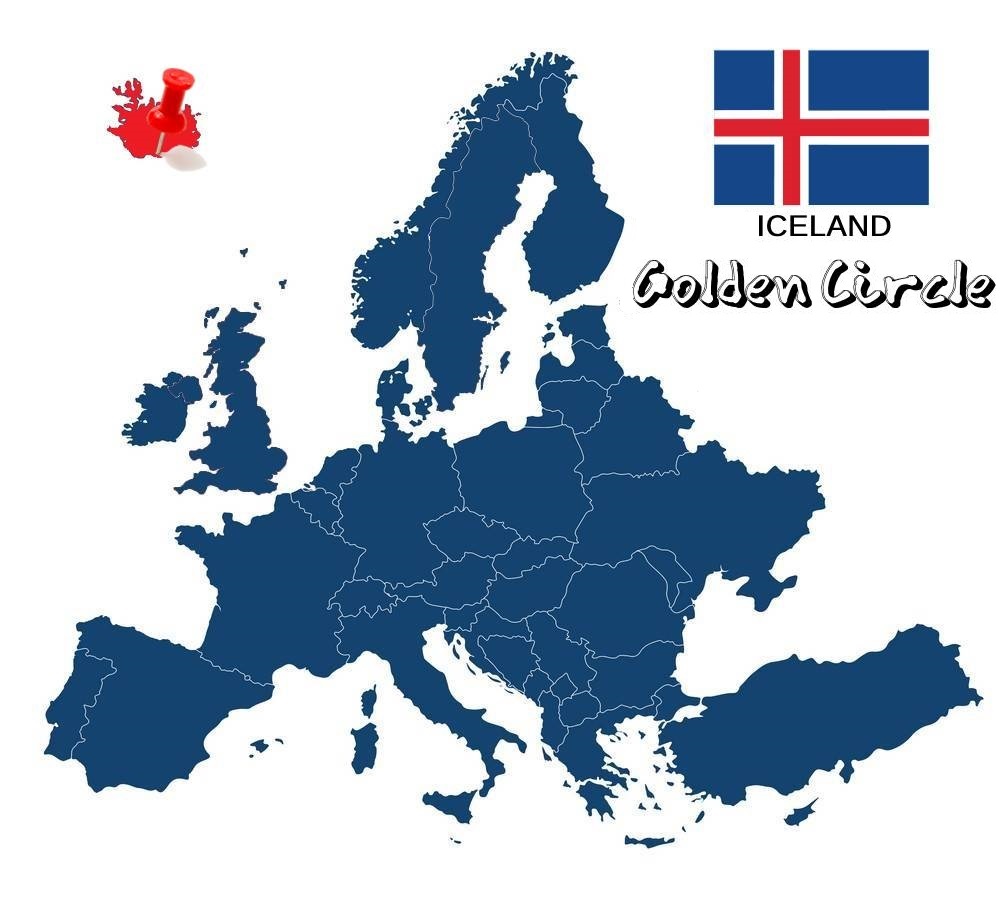 If you've seen photos of Iceland, most of them are probably from the Golden Circle. This circular route includes some of the greatest geological wonders of the country and what makes it even more popular is the fact that it is easily accessible to everyone!
If you've seen photos of Iceland, most of them are probably from the Golden Circle. This circular route includes some of the greatest geological wonders of the country and what makes it even more popular is the fact that it is easily accessible to everyone!
A few words about the area
The Golden Circle (Gullni hringurinn) is a tourist route in southern Iceland, covering approximately 300 km, starting in Reykjavík and ending in the country's southern highlands. The name of this area comes from the name of its main attraction, the waterfall Gullfoss, which in Icelandic means "golden waterfall"! There you will have the opportunity to admire some of the top landscapes of the country and live unique experiences. The entire Golden Circle route can easily be done in one day, as the classic journey covers around 230km. The road is good and the route magical, but estimate more than the three hours the GPS will tell you, as you'll want to constantly stop for photos. So I will try to introduce you to Iceland's Golden Circle through my own eyes and share with you what I think a first-time visitor should see.
Kerid Crater
The Kerid Crater or the "Eye of the World" as the locals call it, is the first major attraction to be seen starting the exploration of the Golden Circle. It is a volcanic lake, which is about 6500 years old! Although volcanologists initially believed that Kerid was formed by a massive volcanic eruption, as is the accepted rule with volcanic craters, more thorough studies in the Grimsness area failed to find any evidence of such an eruption. It is now believed that Kerid was a cone-shaped volcano, which erupted and emptied its magma Reserve. Once the magma was exhausted, the cone's weight collapsed into the empty magma chamber. The current water lake at the bottom of the crater is flush with the aquifer and is not caused by rainfall. The lake itself is about 55 meters deep, 170 meters wide and 270 meters long! Being there, you will have the opportunity to walk around the crater and see it from above, while there are stairs to go down to the lake. Landowners charge admission to view crater 450 ISK, which is about 3e.
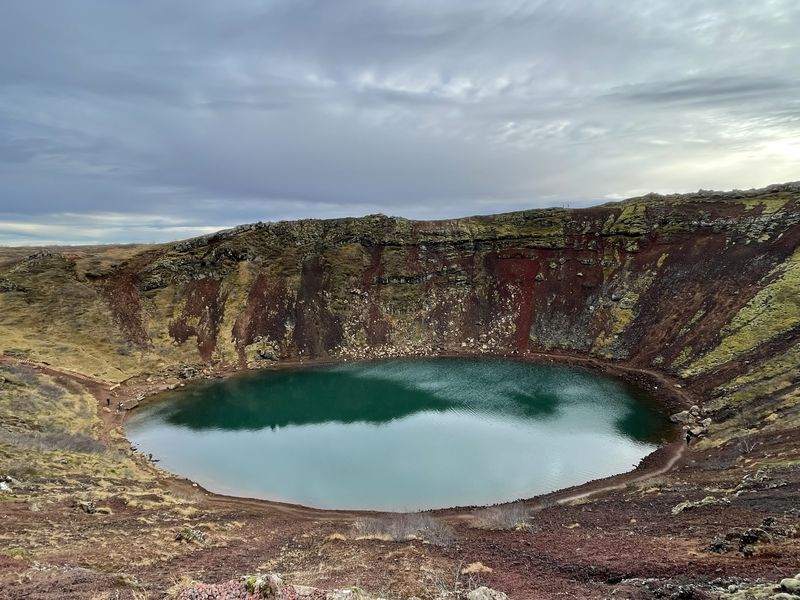
Geysir
Also a favorite stop for those traveling along the Golden Circle is the highly active area of Geysir Hot Springs with exploding geysers! The most impressive of them is called Strokkur and launches water up to 30 meters into the air every few minutes! In fact, it is the first Geyser described in a printed source and the first known to modern Europeans! The reason for this explosion is the contact of underground water with the warm substrate of this geothermal area, which heats up and when it reaches its maximum temperature and pressure, it springs from the geyser to the air. The water is extremely hot and visitors should keep their distance and stay in the marked area to be completely safe. To visit Geyser, you don't have to pay a ticket!
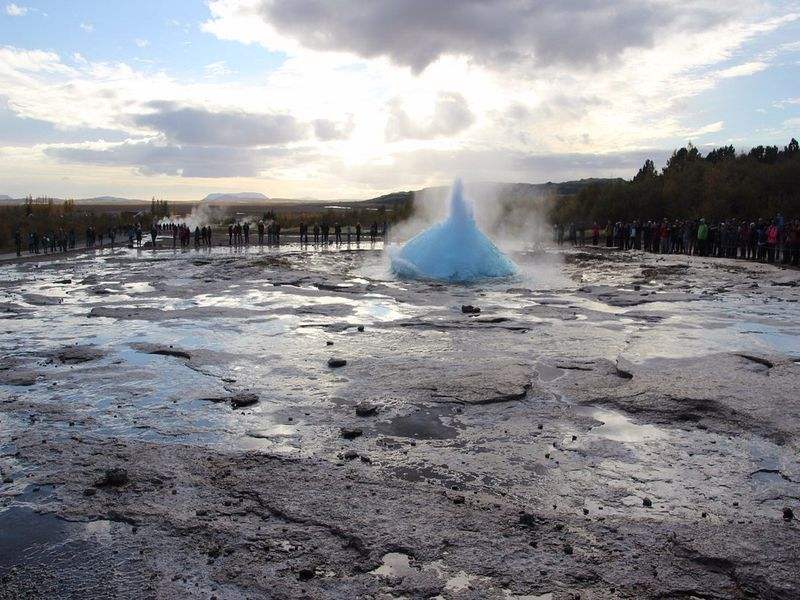
Gullfoss
The truth is that Iceland is not devoid of waterfalls, but one is the real king. The Gullfoss or golden waterfall as translated from Icelandic, is one of the most important sights to be seen on the island. According to legend, a Viking threw his treasure at the base of the waterfall so that no one could enjoy its riches when he died. These are essentially two waterfalls, with the upper one falling 11 meters and the lower one 21 meters, so a total of 32 meters falling water! Geologists believe Gullfoss was formed about 5,000 years ago by the melting of Iceland's second largest glacier, Langjokull. This flooded the landscape and created the Hvita River, which fell into the ravine and in turn created this waterfall! Unlike Iceland's other popular waterfalls, Gullfoss falls into a ravine and you see it from above, rather than looking at it from below. This means that you are unlikely to get wet from spraying water! Of course, the weather in Iceland is completely unsettled and even in summer it can rain and blow, so it is advisable to always wear a raincoat! Gullfoss has also been the setting for dozens of film blockbusters and TV series, including Viking and Lost in Space. There is no charge for access to the waterfall and parking is also free.
Thingvellir National Park
Thingvellir National Park was founded in 1930 and is one of three UNESCO World Heritage sites in Iceland. While there, you will admire dried magma fields, covered with Icelandic moss, that have stood carved from glacial springs on the same spot for thousands of years! One of the biggest attractions in the park is the exposed North American and Eurasian tectonic plates. This is one of the few areas in the world where you can see and walk along a tectonic plate! Moreover, this park is very important for the country, as the first democratic parliament was elected there in 930 AD, while also being used as a court! Another important reason why Thingvellir is considered so significant to Icelanders is the fact that it was there that the decision was made to abandon the belief of paganism and Scandinavian gods and the adoption of Christianity in 1000 AD, under threat of invasion from Norway. Finally, this particular park is home to the Silfra glacial spring fissure, one of the top ten locations in the world for snorkeling and divers! There is no ticket to enter the park, but parking is paid. At the entrance there is a Tourist Information Center in which you will learn everything about the park and its history.
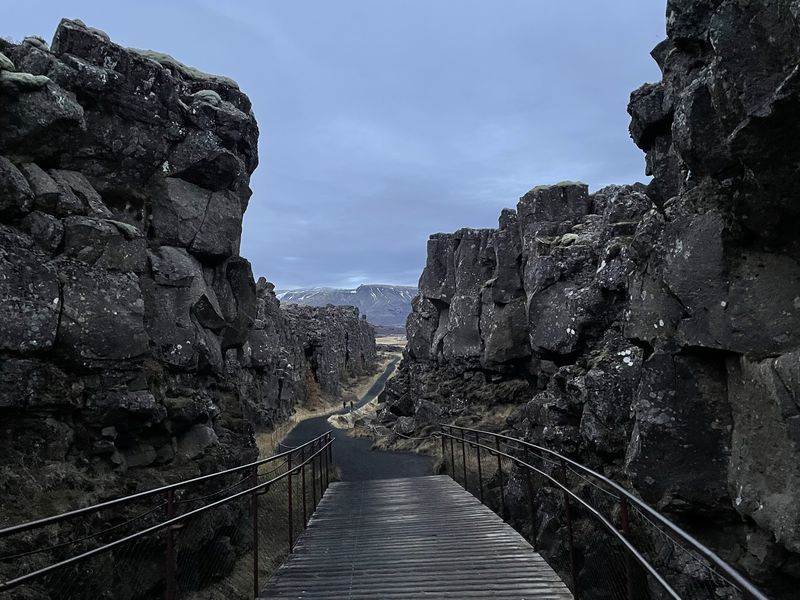
Skálholt
Skálholt is one of the most historic places in Iceland. It is part of the golden circle route and for more than 700 years it was the scene of the most dramatic events that shaped the political, intellectual and cultural life of the country! The Skálholt Cathedral that we see today was built in 1963, being the 10th Cathedral on the same site, the first having been built in 1056. It is known for its elegant architecture, beautiful sanctuary and impressive stained glass windows. Also, in the temple you will find the tombs of all the bishops, a museum of historical objects and a mysterious underground tunnel, located in the cellar of the church! Entrance to the temple is free, and guided tours are available for groups of 10 or more for a modest fee.
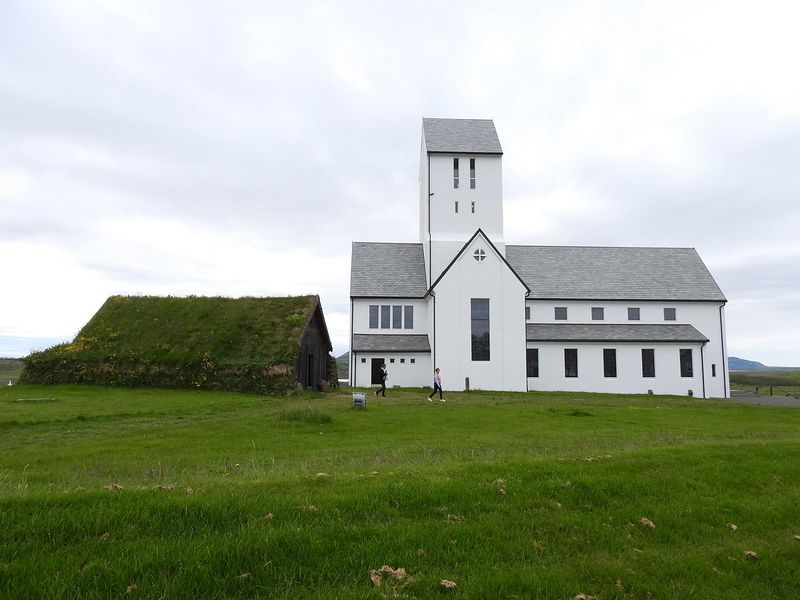
Farms
Of course a trip to the Golden Circle would not be complete without a visit to one of the local farms in the area! There you will have the opportunity to get acquainted with Icelandic rural life and live an awesome experience. The people of each farm are very friendly and make the guests feel like home. They usually offer coffee or tea and Icelandic pancakes, while talking about their everyday life and agricultural life in Iceland. These are poor people, who through agrotourism are trying to gain some extra income. So don't be surprised that on every farm there is something like a shop with local products and handmade souvenirs. Finally, the hallmark is, of course, the farm animals, the most popular being Icelandic horses, sheep, cows, pigs and poultry!

How to go
At the moment Thessaloniki, as it is not directly connected by air with Iceland, so in order to reach the country you have to make at least one stop. The most economical option comes from a combination of flights between Wizz Air and Ryanair, via Vienna and Milan respectively, which with proper planning can find tickets starting from 120€ round trip!
Where to stay
In Iceland, accommodation is very expensive. What we call value for money does not exist, as all hotels are overpriced. If you do this route, I suggest that you don't just stay in one hotel, inn or room to rent, but choose the right one based on the stops you will make on your itinerary. So my suggestion is located in Reykholt and is the Guesthouse Fagrilundur.
How to move
The wisest way to move around Iceland's Golden Circle is, of course, to rent your own means of transport. Although Iceland is expensive in most cases, renting a car is not so prohibitive. This way you will have the ability and flexibility to discover what you want and at the pace you want. Another solution is to go in groups, since there are dozens of companies that carry out organized bus tours from Reykjavik.
What to eat
Icelandic cuisine is considered one of the strangest in Europe and is quite a far cry from the cuisines of Mediterranean countries. It relies mainly on meats such as sheep and lamb, various soups, as well as fresh and dried fish. The truth is that strange foods such as the hakarl shark or puffin are no longer consumed by locals but continue to exist in restaurants for tourist reasons! However, you should know that food in Iceland is expensive, with a dish in a restaurant costing from 20 to 40e!! So, many locals and tourists resort to the street food solution, the most popular of which is hot dog! Food options in this part of the country are limited.
Useful information

In the Golden Circle of Iceland, we travel with a new type of Passport or Police ID, where the details are written in Latin characters.
In the Golden Circle of Iceland, the language used is, of course, Icelandic. But the majority, even the elderly, speak English, so ask for clarification in English.
The country's currency is the Icelandic krona (ISK) and its current exchange rate is €1 = 150.90 kroner.
Iceland's Golden Circle is three hours behind Greece (GMT).
The Unpaid Consulate General is located in Reykjavík at Baejarlind 6, IS-201 Kopavogur and its telephone number is (00354) 5510700.
The weather in Iceland is unpredictable and can change from minute to minute. Here there are no hot days, but less cold days, so if you want to explore the country from end to end, then the most ideal time is summer. The temperatures are relatively high, while the days are quite long. Of course, if you wish to see the Northern Lights, you should be in the country in winter. Then the cold and the wind will be very strong, the daylight will be minimal, but this unique phenomenon in relation to snowy places will compensate you!
Recommended excursions → Reykjavik, South Coast, Akureyri

If this article seemed interesting or contributed to your quality information, then you can like my facebook page: o_thessalonikios or follow me on instagram!
Mouzakidis Pantelis








